These paintings are part Orthodox Iconography, part Persian miniature, and part primitive folk art. In these ubiquitous images, Mamay is surrounded by typical symbols of the Cossack; a saber, a spear, a pistol, a strong horse, and a bottle of Ukrainian Vodka among them. In these paintings he is uniformly depicted as playing the Kobza, the traditional Ukrainian plucked Lute. Often we see him beatifically plucking it with a man hanging upside down from the branches of a tree; a firm reminder that, in spite of his charming and mildly impish appearance, Mamay is a Cossack...a warrior down to his bones. He is a romanticised distillation of the people of the steppe, with the wild, unruly and free nature which is the linguistic source of their name. The earliest surviving image of Mamay is from 1642.
The six-hundred-fifty year history of the Cossack is amazing and powerful, and for better or worse, they have made many fascinating chapters in the history of our planet. Kozak Mamay is a symbol of that history; potent, charming, somewhat intimidating, and entirely captivating. This is the first of many posts of these amazing images.
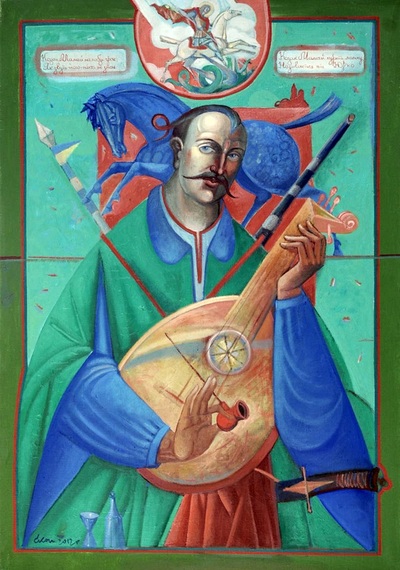
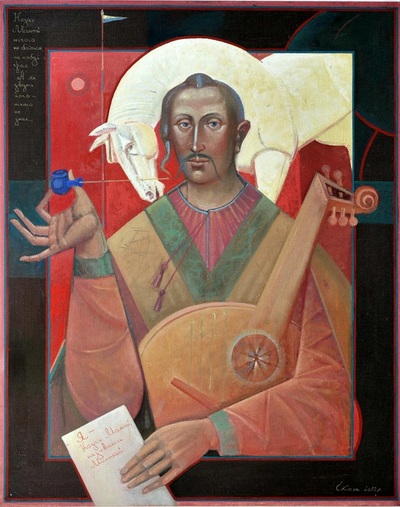
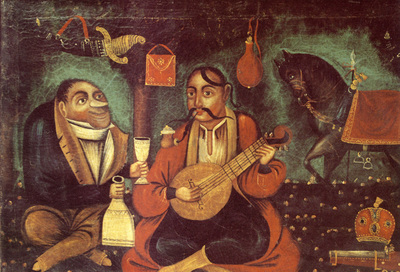
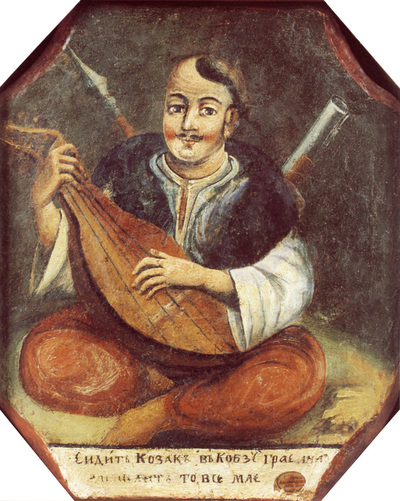
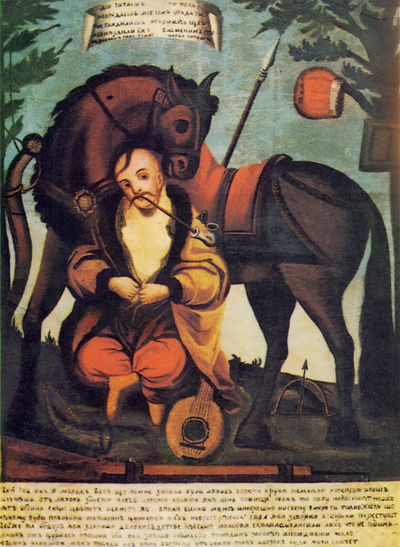
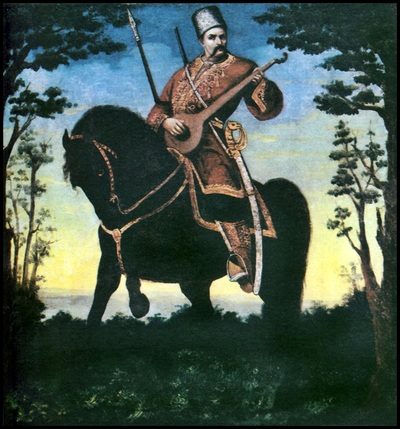
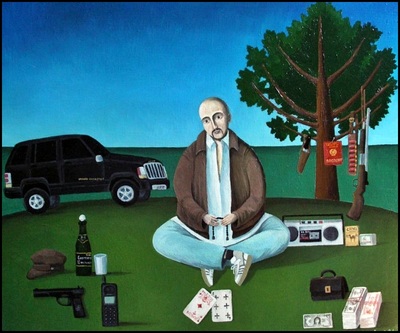
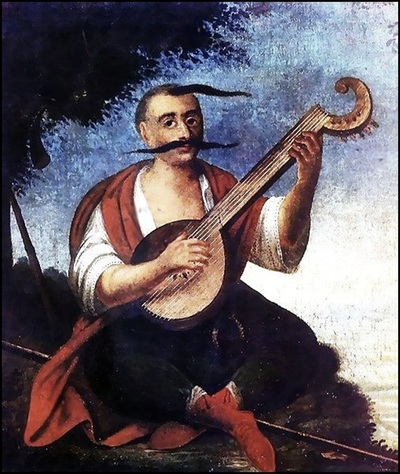
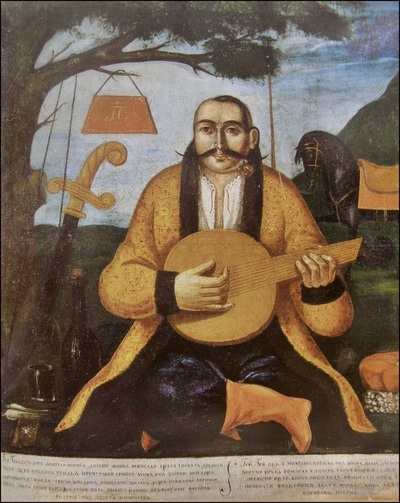
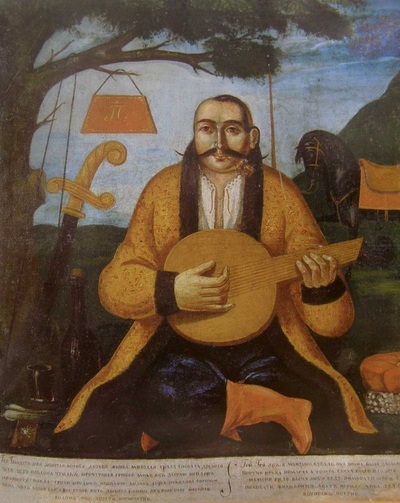

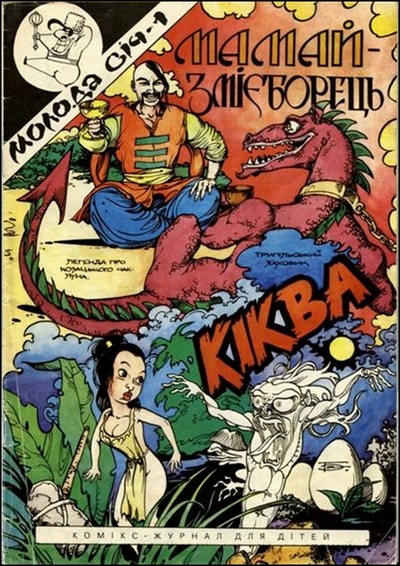

 RSS Feed
RSS Feed

